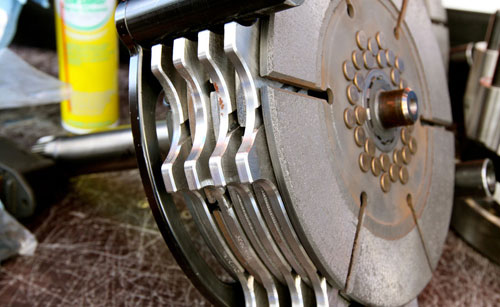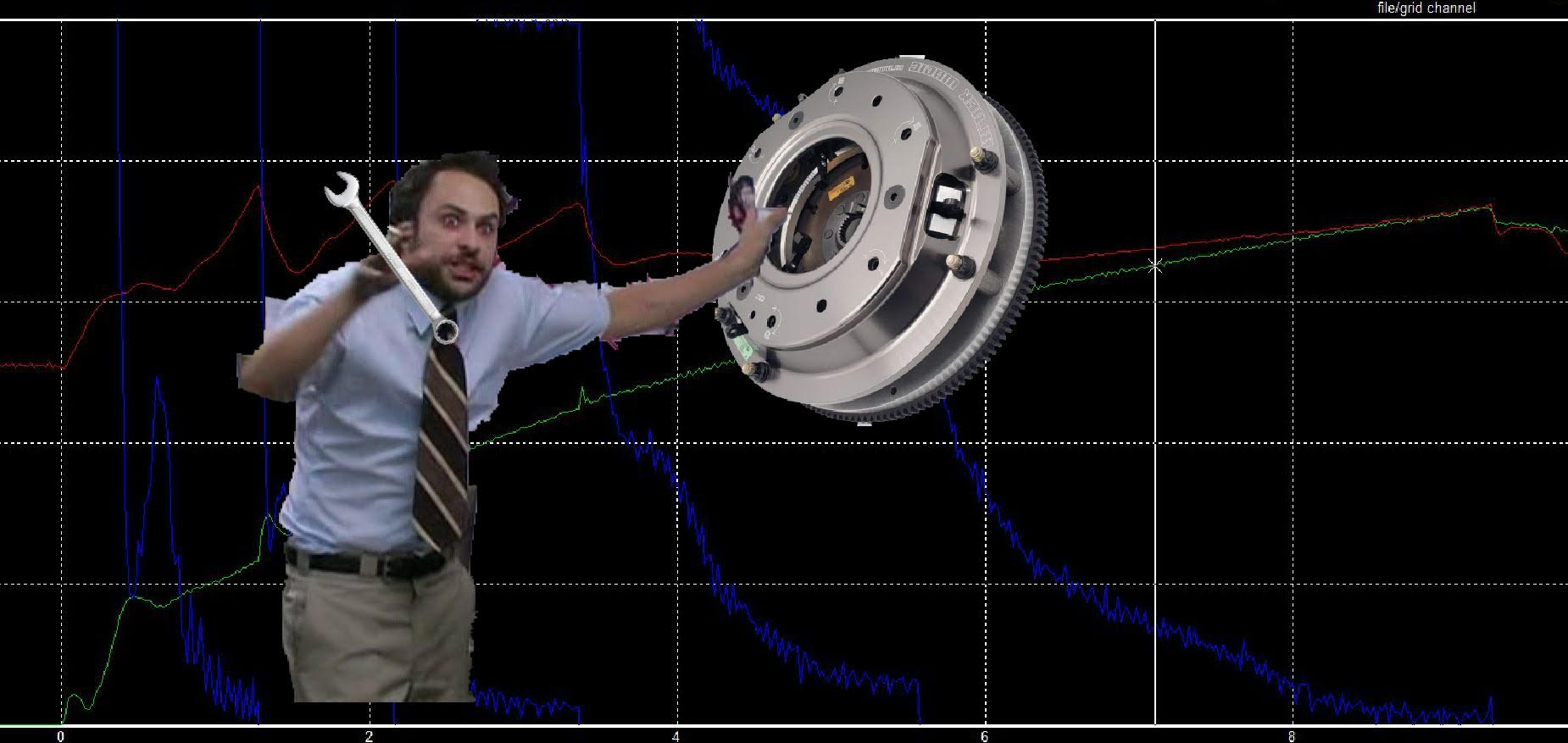We’ve all heard the term, “Stick Shift Racing is Expensive.” You’ve also probably heard about the “Box of broken parts,” that accompanies any stick shift car. First, stick shift racing IS expensive. All racing is expensive. Secondly, any race car worth its salt has more than a few boxes of broken parts. But it’s true. Stick shift drag cars break all the time.

Image Credit: Adam Dorey
Why do stick shift cars break?
First, we must understand one fundamental thing about energy (torque): The torque that your engine makes has to go somewhere. When you let out the clutch pedal and all that torque starts making its way rearwards through your clutch, bellhousing, transmission, driveshaft, U-joints, rear end, axles, wheel studs, wheels, and tires, something has to give.
Each of your drivetrain components must be strong enough to survive such a sudden shock of energy. That sudden shock of energy will find the weakest link in your drivetrain and break parts. If you’re lucky, your drivetrain will survive the initial burst of energy and the torque will make its way to the rear tires. Unfortunately, this burst of energy commonly results in excessive tire spin. A little tire spin can be a good thing. But too much tire spin will ruin your E.T.
That’s why stick shift racing gets expensive. Racers will constantly find the weakest link and keep upgrading until they’ve spent a small fortune in drivetrain parts. Or they’ll give in to the weak and, “just put a glide in it.”
Stick shift drag racing has a secret. It’s not so well hidden, either. For over half a century, stick shift drag racers have utilized this powerful tool to propel them into the winner’s circle. What’s the secret? Clutch slip.
But wait…isn’t clutch slip a bad thing? Well, that depends. When we’re talking about your 200,000 mile Ford Probe’s worn clutch – yes it’s a bad thing. Or if your clutch never locks up because it simply can’t hold the power – that’s also bad. What we’re talking about is different. We’re talking about planned, controlled, and beneficial clutch slip.

Controlled clutch slip is how a Top Fuel dragster can put 11,000 horsepower to the ground gradually over 1,000 feet. By carefully and methodically controlling how quickly the power from the engine is applied to the tires, they’re able to keep the cars from excessively spinning, wheelieing, and other undesirable run characteristics.
This is the entire purpose of a clutch. The same principles apply to anything with a clutch. Drag cars, go-karts, stock Miata’s… you name it. Even automatic transmissions utilize internal clutch technology to get cars down the track.
Perhaps the most interesting part of clutch slip is that the torque (energy) is actually not wasted. As long as your clutch eventually locks up in every gear, that potential energy that was stored in the clutch gets transferred back into the drivetrain! Not only that, but while your clutch is slipping, your engine has less of a load. And while your engine has less of a load, your RPM’s are increasing quicker than they would otherwise with a fully locked up clutch. This is the reason a stick shift car can be more efficient and than an identical automatic car. It’s also the reason automatic cars get weight breaks in some of the most competitive forms of professional drag racing.
In fact, lock-up torque converters are surging in popularity because of this exact idea. A slipping torque converter wastes energy. If you eventually lock that converter up, that energy is returned to the tires in the form of more acceleration.
Many stick shift drag racers today do not understand these benefits of clutch slip. Those that do find themselves in the winners circle way more often and are reluctant to share their secrets. Thankfully we’re in the business of information!
So I need clutch slip…but how?
There are many ways to control clutch slip. Each have their pros and cons. It’s up to you to pick the right method that fits your application. Here are some of the most common methods for controlling clutch slip:
Driver Mod
By far the most common method for clutch slip is manually releasing the clutch pedal slowly with your left foot. There’s a lot of skill in finding the balance between throttle, clutch, and track surface. Every car is different, so finding the perfect launch for your car will take a lot of practice. Once you can quickly and consistently launch your car with your left foot, you earn the Driver Mod title.

Adjustable Clutches
Adjustable clutches have been around for a LONG time. Not all adjustable clutches are created equal, but most of them allow you to adjust both the base pressure and counterweight. Simply put, the base pressure sets the minimum clamping force. Counterweight enables the clutch to clamp harder as engine RPM increases due to centrifugal force. Fine tuning the base pressure and counterweights enable stick shift drag racers to have a consistent and smooth race car.

Image Credit: Black Magic Clutches
Clutch Slipping Devices
There are many devices on the market that allow for consistent controlled clutch slip without going to an adjustable clutch. These devices vary wildly. They can be hydraulic, pneumatic, or completely mechanical.

Image Credit: BangShift Billy
In conclusion, you need clutch slip. Find the method or product that works best for you – then go drive the thing! That’s the secret.


